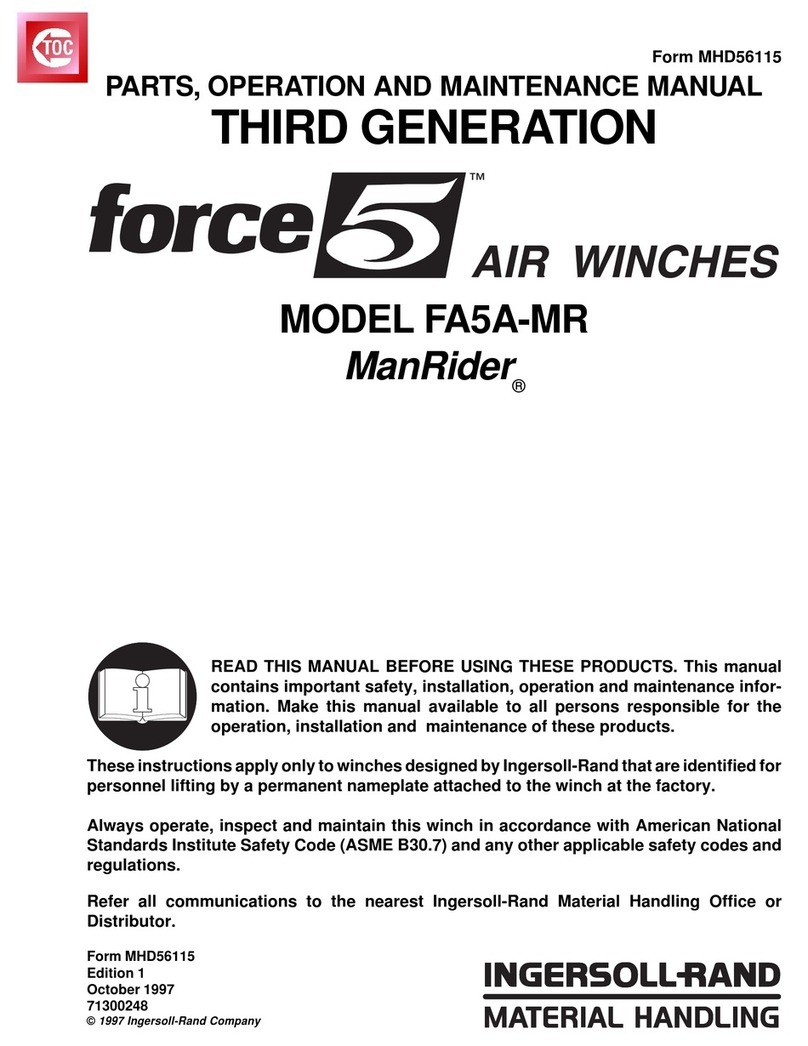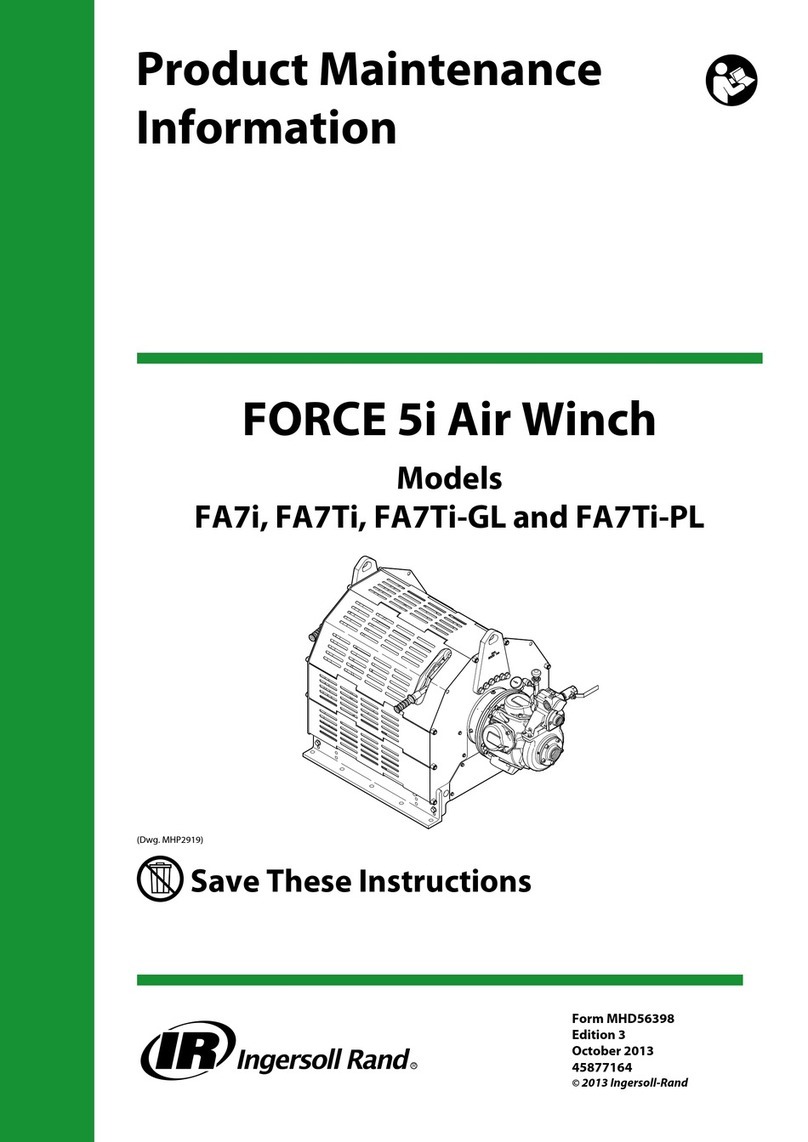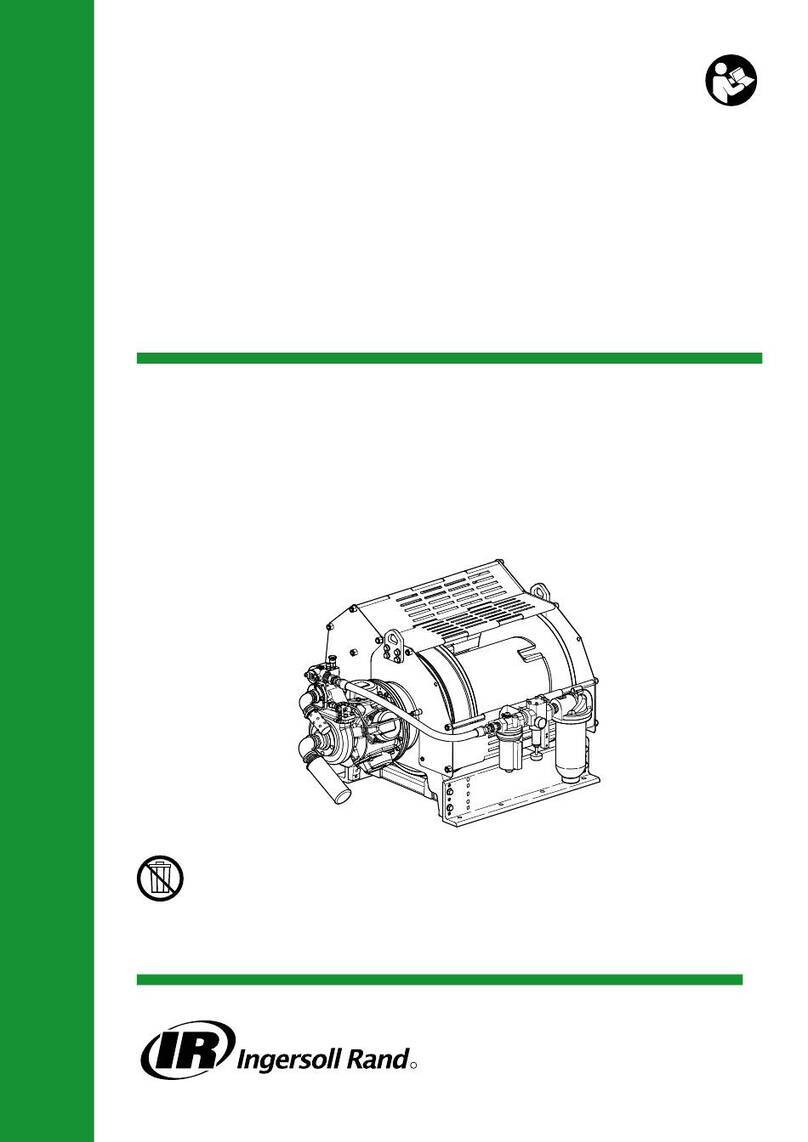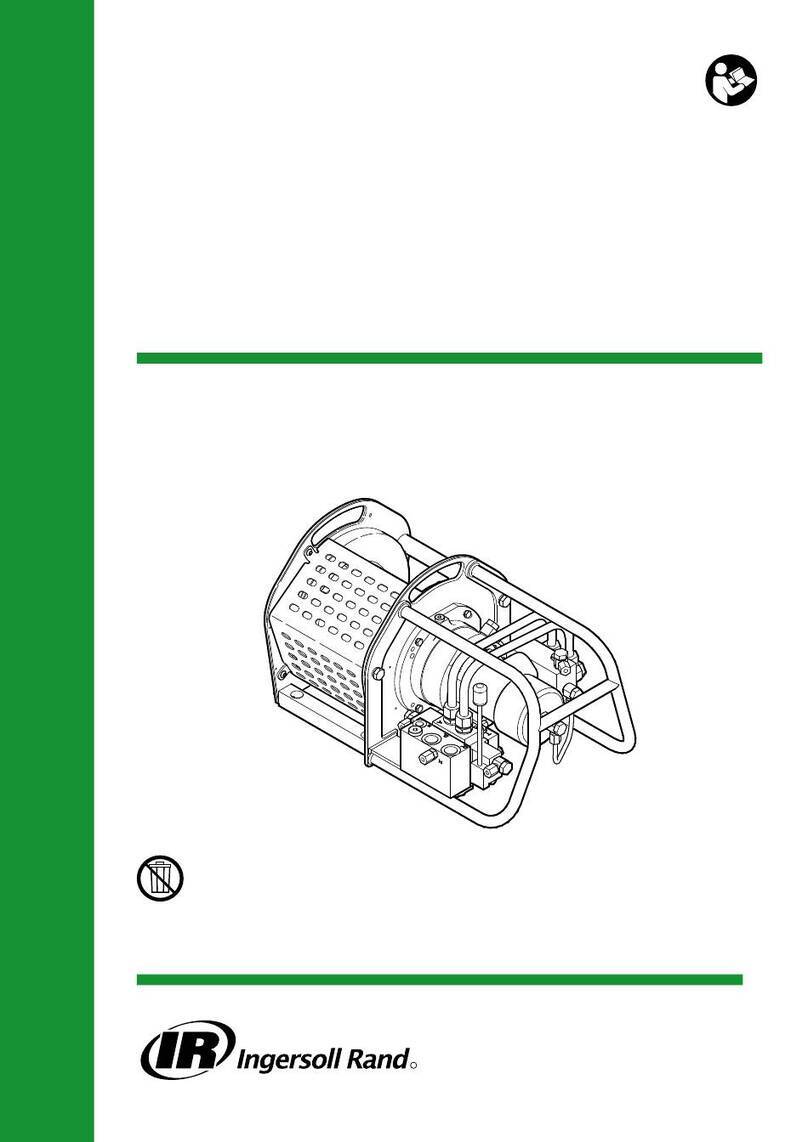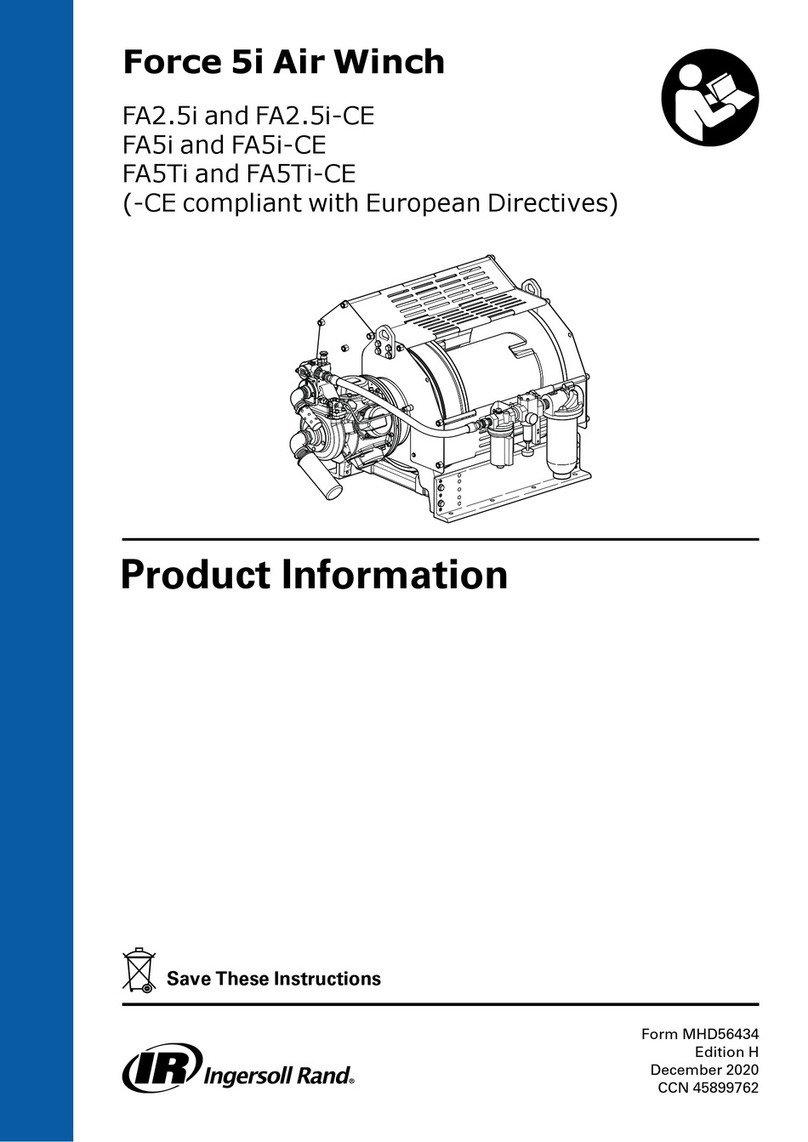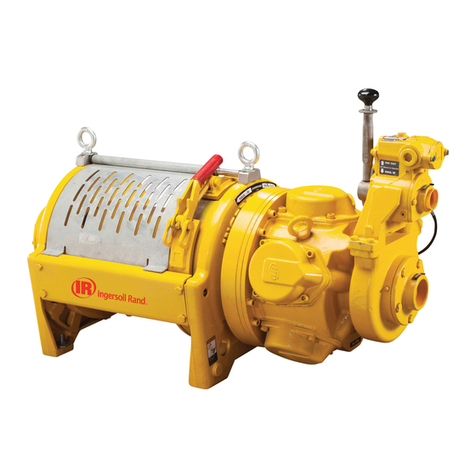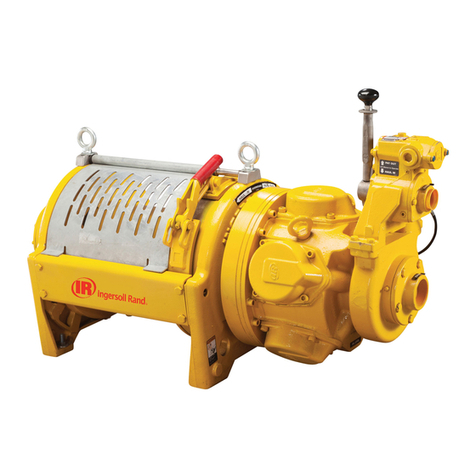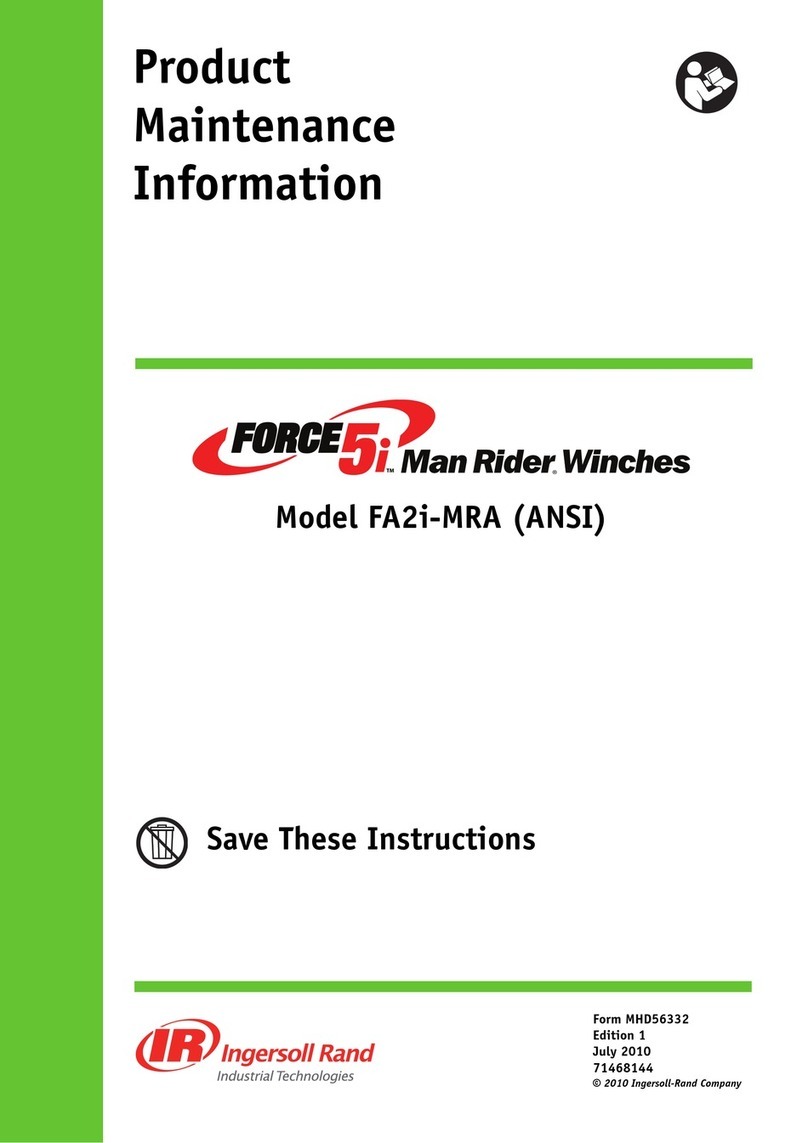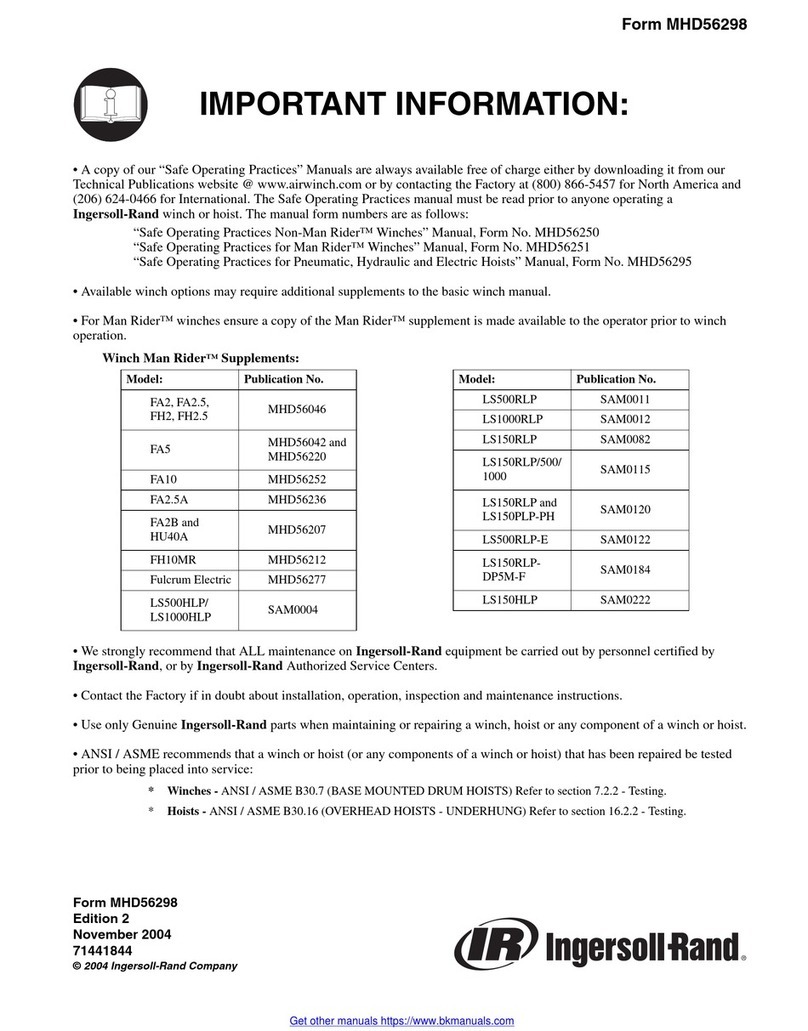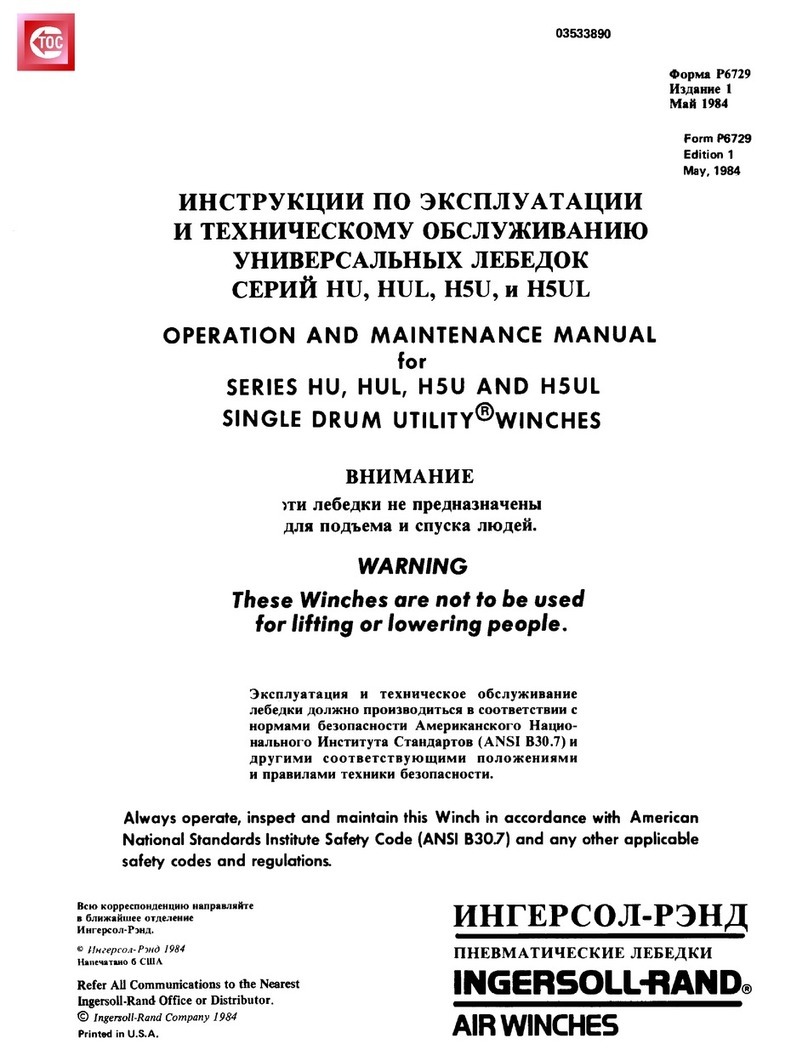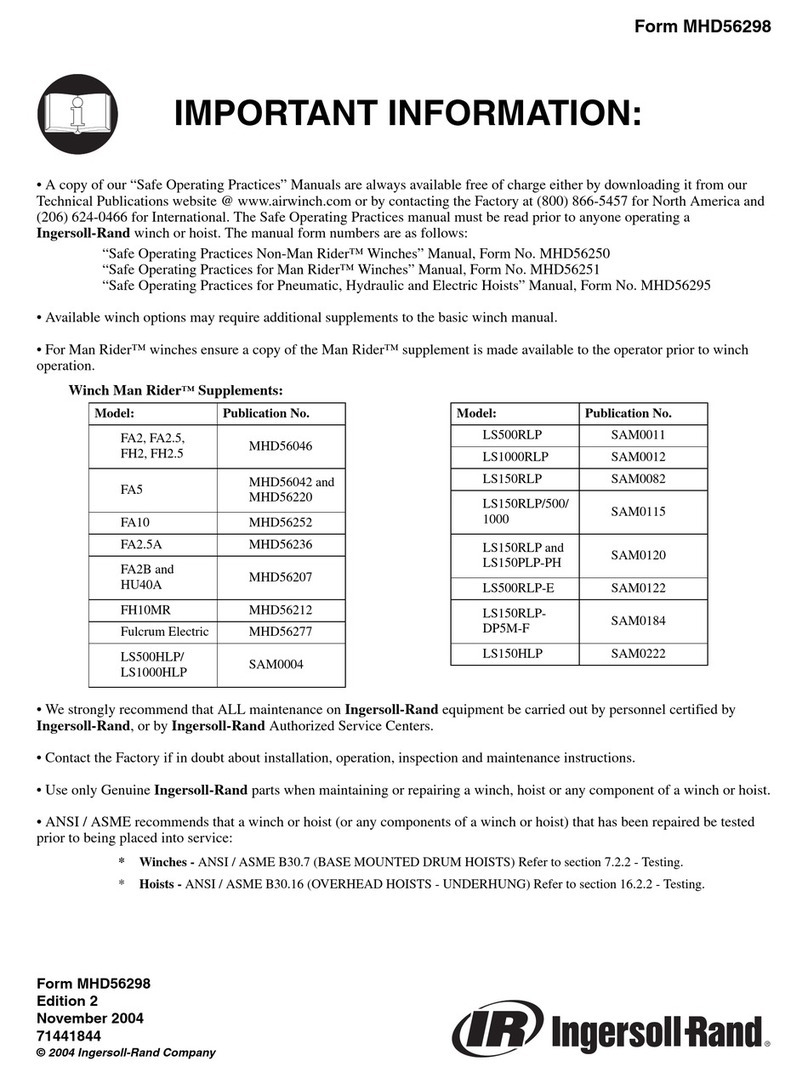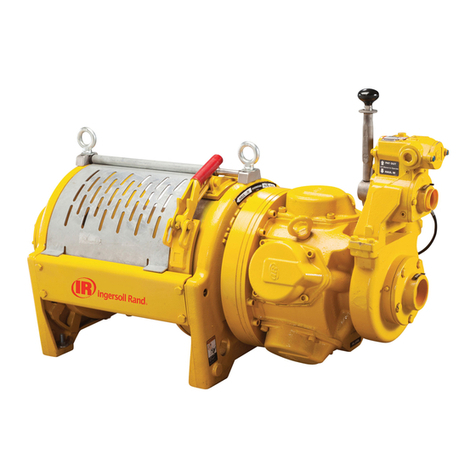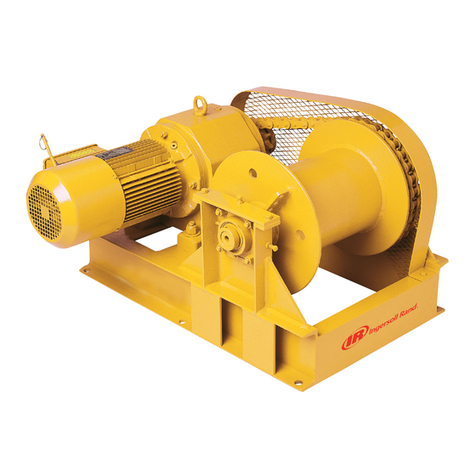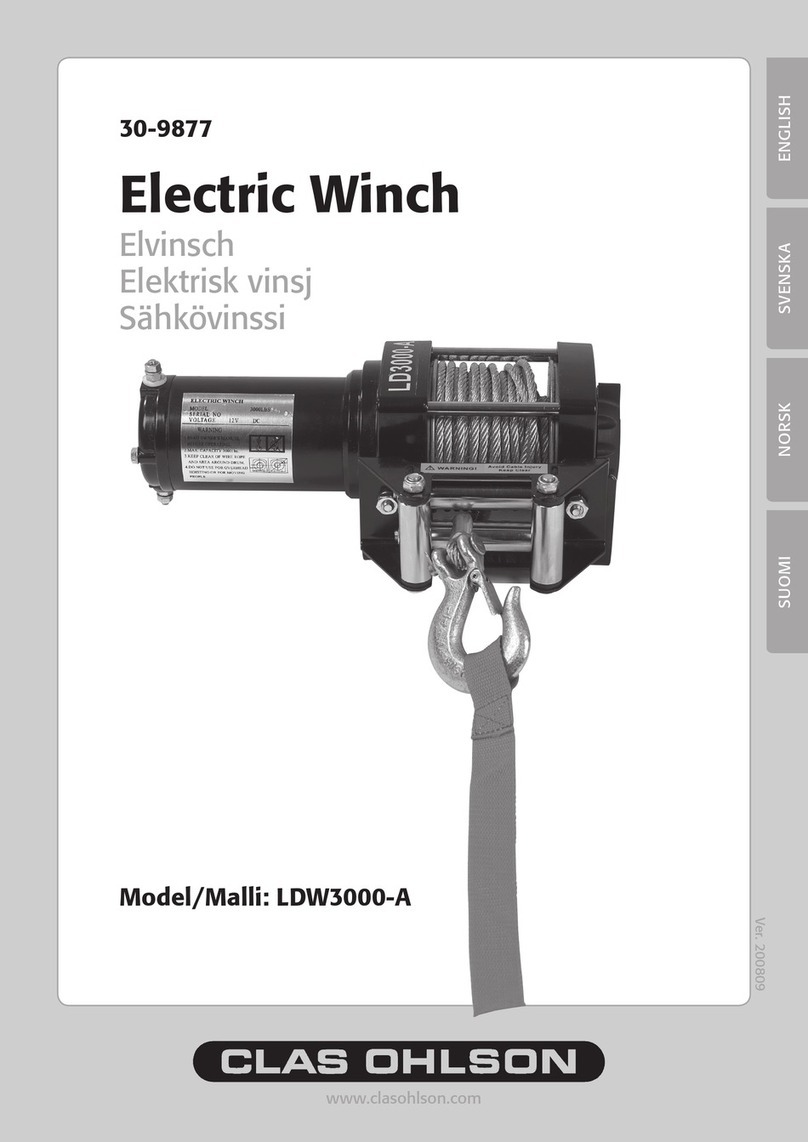
3. Apply the wire rope so that it winds over the top when the drum is rotated in a
direction that is counterclockwise when facing the motor end of the winch. This
is indicated by instruction plate on the gear case.
4. Secure by tightening anchor screws.
CAUTION
• Make sure first wrap of wire rope is tight and lies flush against the drum
flange.
• The wire rope should be applied to the drum so that it overwinds when the
drum rotates in a clockwise direction when facing the drum end of the winch.
This is indicated by an arrow on the gear case.
nSafe Wire Rope Handling Procedure
- Always use gloves when handling wire rope.
- Never use wire rope that is frayed or kinked.
- Never use wire rope as a sling.
-Always ensure wire rope is correctly spooled and the first layer is tight against
drum.
- Always follow wire rope manufacturer’s recommendation on use and
maintenance of wire rope.
nWire Rope Spooling
To compensate for uneven spooling and the decrease in line pull capacity as the drum
fills up, use as short a wire rope as practical. When rewinding apply tension to the
end of the wire rope to eliminate line slack. This helps achieve level winding and
tight spooling.
nRigging
Make sure all wire rope blocks, tackle and fasteners have a sufficient safety margin
to handle required load under all conditions. Do not allow wire rope to contact sharp
edges or make sharp bends which will cause damage to wire rope, use a sheave. Refer
to wire rope manufacturer’s instructions for proper sizing, use and care of wire rope.
nSafe Installation Procedures
1. Do not use wire rope as a ground (earth) for welding.
2. Do not attach a welding electrode to winch or wire rope.
3. Never run wire rope over a sharp edge. Use a correctly sized sheave.
4. When a lead sheave is used, it must be aligned with center of drum. The diameter
of lead sheave must be at least 18 times the diameter of wire rope. Refer to Dwg.
MHP2449 in Product Safety Information Manual.
5. Always maintain at least three full, tight wraps of wire rope on drum.
nAir Supply
The air supply must be clean, free from moisture and lubricated to ensure optimum
motor performance. Foreign particles, moisture and lack of lubrication are the primary
causes of premature motor wear and breakdown. Using an air filter, lubricator and
moisture separator will improve overall product performance and reduce unscheduled
downtime. Refer to Dwg. MHP0191 on page 9, A. Air Out; B. Lubricator; C.
Regulator; D. Air In; E. Filter.
Refer to Table 2 ‘Specifications’ on page 4 for motor air consumption and rated
operating pressure. If air supply varies from what is recommended, product
performance will change.
Install air line lubricator, filter and regulator as close as possible to air inlet on motor.
Lubricator must be located no more than 10 ft (3 m) from motor.
nAir Lines
Inside diameter of air supply lines must not be less than size specified in Table 2
‘Specifications’ on page 4. Before making final connections, all air supply lines should
be purged with clean, moisture free air or nitrogen before connecting to main air
inlet. Supply lines should be as short and straight as installation conditions will
permit. Long transmission lines and excessive use of fittings, elbows, tees, globe
valves, etc. cause a reduction in pressure due to restrictions and surface friction in
lines.
nAir Line Lubricator
Always use an air line lubricator with these motors. The lubricator must have an inlet
and outlet at least as large as inlet on motor.
CAUTION
• Lubricator must be located no more than 10 ft (3 m) from motor.
• Shut off air supply before filling air line lubricator.
The air line lubricator should be replenished daily and set to provide 6 to 9 drops per
minute of ISO VG 32 (SAE 10W) oil. A fine mist will be exhausted from control valve
when air line lubricator is functioning properly.
nAir Line Filter
It is recommended that an air line strainer/filter be installed before the lubricator to
prevent dirt from entering the motor. The strainer/filter should provide 20 micron
filtration and include a moisture trap. Clean the strainer/filter periodically to
maintain its operating efficiency.
NOTICE
•When air filter is used ensure it allows air to pass through at products rated
scfm. Refer to “SPECIFICATIONS” on page 3.
nAir Pressure Regulator
If an air pressure regulator is used, install between lubricator and filter.
nMoisture in Air Lines
Moisture that reaches the air motor through air supply lines is a primary factor in
determining the length of time between service overhauls. Moisture traps can help
to eliminate moisture. Other methods, such as an air receiver which collects moisture
before it reaches motor, or an aftercooler at compressor that cools air to condense
and collect moisture prior to distribution through supply lines, are also helpful.
nMufflers
Ensure mufflers are installed in winch exhaust manifold and control valve exhaust
port. Check mufflers periodically to ensure they are functioning correctly.
nShut Off Valve
Refer to the Product Safety Information Manual for information.
nDrum Guard
Use of a drum guard is recommended on all winches. Refer to the Product Parts
Information Manual.
Install drum guard and remove the minimum amount of mesh from the guard to
provide clearance for wire rope travel.
WARNING
• Do not allow wire rope to come into contact with drum guard during winch
operation. Wire rope could become worn and damaged. Adjust opening in
guard to clear wire rope travel angle.
nMotor
For optimum performance and maximum durability of parts, provide recommended air
supply as measured at motor inlet. Refer to Table 2 ‘Specifications’ on page 4. The air
motor should be installed as near as possible to compressor or air receiver.
nNatural Gas Operation (optional feature)
WARNING
•Ensure all fittings and connections are tight. Inspect all connections with
suitable leak detection equipment.
•At first notice of any unusual odors or noticeable leaks, cease winch
operation until source is identified and corrected.
•Natural gas exhaust must be piped away from the winch.
The winch may be run using natural gas. However, motor and valve modifications are
required for this usage. Refer to Product Parts Information manual for additional
information. Use of natural gas will reduce motor life. Natural gas exhausting from
the winch must be piped away.
nInitial Winch Operating Checks
Winches are tested for proper operation prior to leaving the factory. Before the winch
is placed into service the following initial operating checks should be performed.
1. When first running the motor inject a small amount of light oil into the inlet
connection to provide initial lubrication.
2. Check oil level in motor and gear case grease are correct. Top off levels as required
before operation as described in “LUBRICATION” section on page 7.
3. Operate winch in both directions with no load for one to two minutes.
4. New brake band Lining Run-in Procedure: All new brake band linings require a
‘run-in’ period. Operate the winch without load in the payout direction while
gradually applying the brake. Allow the brake to slip for approximately one
minute. Winch motor may stall as drum brake band lining fully engages. Do not
allow brake to overheat.
5. Check operation of brakes. Adjust if necessary as described in “MAINTENANCE”
section in the Product Maintenance Information Manual.
6. Check operation of limit switches, locking mechanisms and all safety devices
when equipped.
7. Check foundation mounting fasteners are secure.
8. Install drum guard when provided.
For winches that have been in storage, the following start-up procedures are required:
1. Give the winch an inspection conforming to requirements of
‘Winches Not in Regular Use’ on page 7.
2. Pour a small amount of ISO VG 32 (SAE 10W) oil in motor inlet port.
3. Operate motor for 15 seconds in both directions to flush out any impurities.
4. The winch is now ready for normal use.
Form MHD56383 Edition 1 5













